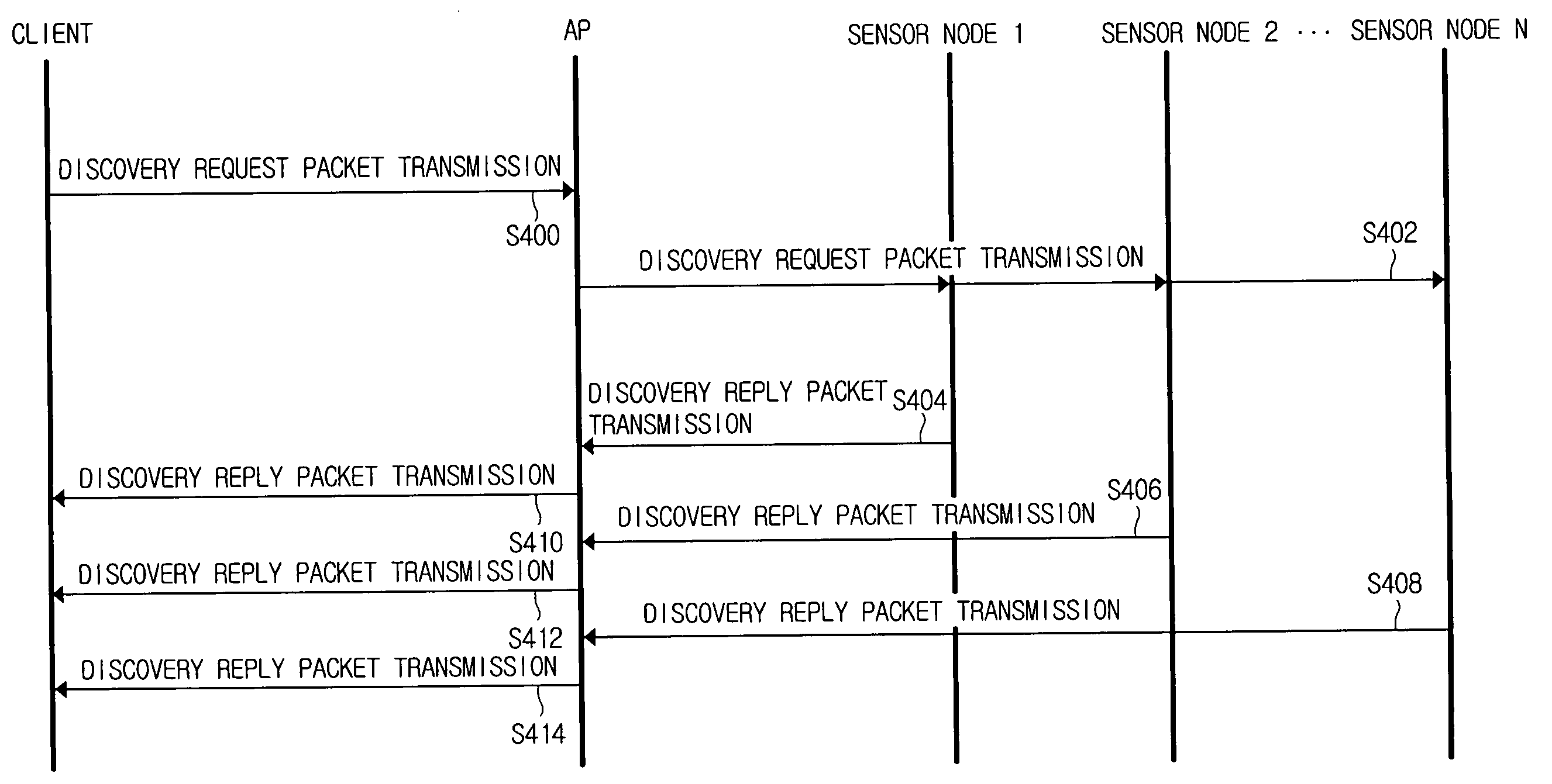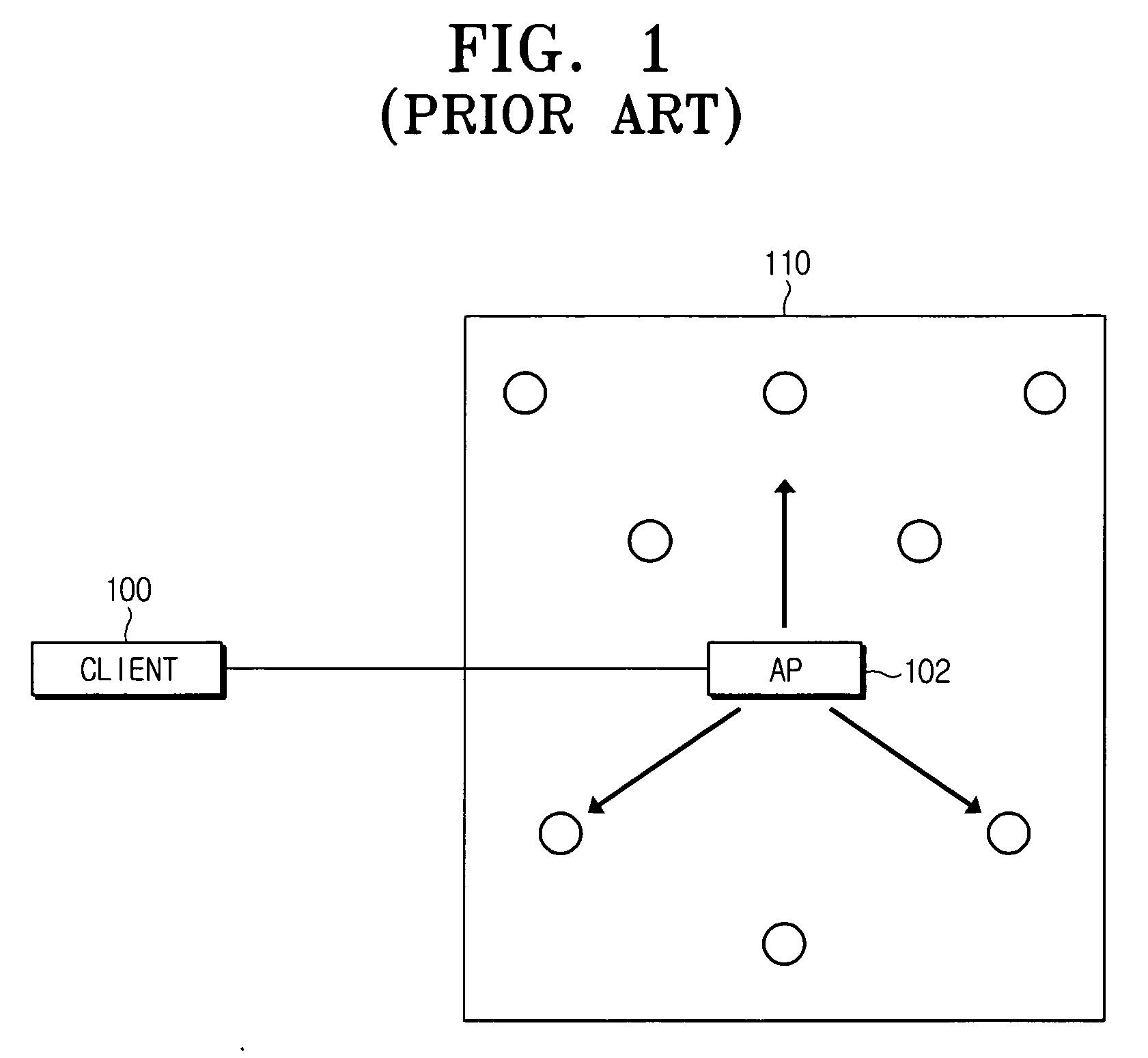Method for discovery reply packet transmission in communication network
a communication network and packet transmission technology, applied in the field of communication systems, can solve the problems of packets beyond the storage capacity of the queue lost or dropped, and achieve the effect of reducing the drop ratio of discovery reply packets
- Summary
- Abstract
- Description
- Claims
- Application Information
AI Technical Summary
Benefits of technology
Problems solved by technology
Method used
Image
Examples
first exemplary embodiment
[0035]FIG. 4 illustrates a communication network according to a first embodiment of the present invention. In FIG. 4, the communication network includes a client, an access point (AP), and a sensor node 1 through a sensor node N, similarly to FIG. 2. Hereinafter, the first embodiment of the present invention is described in reference to FIG. 4. Although FIG. 4 depicts the AP, the AP can be any device capable of relaying packets between the sensor nodes and the client.
[0036] The client transmits a discovery request packet to the AP (S400). Information contained in the discovery request packet has been set forth in reference to FIG. 2. The AP forwards the received discovery request packet to neighbor sensor nodes (S402). Referring back to FIG. 2, the AP forwards the discovery request packet to the sensor node 1 through the sensor node N. As such, the AP can multicast one discovery request packet to the sensor node 1 through the sensor node N. The AP may duplicate the received discove...
second exemplary embodiment
[0047] In the first embodiment of the present invention, the source node transmits one discovery reply packet without packet fragmentation. According to the second embodiment of the present invention, the source node fragments the discovery reply packet into at least two for the transmission. The number of the fragmented packets is defined as NFR in Inequality (1). It is to be understood that the number of the fragmented discovery reply packets is variable depending on the user's setting. As shown in FIG. 3, the discovery reply packet includes the header field and the plurality of the context information fields. According to the second embodiment of the present invention, the header field contains information relating to the number of the fragmented discovery reply packets. The source node appends partial information contained in the header field to the beginning of the fragmented discovery reply packets. Therefore, the client can receive the fragmented discovery reply packets and i...
third exemplary embodiment
[0055] According to the third embodiment of the present invention, the discovery reply packet is fragmented and transmitted, similarly to the second embodiment of the present invention. A difference lies in that the discovery reply packet is fragmented by a significant unit. In particular, the discovery reply packet of FIG. 3 includes the plurality of context information fields. In the third embodiment of the present invention, the discovery reply packet is fragmented by unit of the context information field. When fragmenting the discovery reply packet, the client divides the packet into a requisite part for the context information translation and an additional part. It should be appreciated that the additional part contains information additionally required for the translation of the context information.
[0056] Hereinafter, the third embodiment of the present invention is described in reference to FIG. 6.
[0057] The source node generates the discovery reply packet (S600). The sourc...
PUM
 Login to View More
Login to View More Abstract
Description
Claims
Application Information
 Login to View More
Login to View More - R&D
- Intellectual Property
- Life Sciences
- Materials
- Tech Scout
- Unparalleled Data Quality
- Higher Quality Content
- 60% Fewer Hallucinations
Browse by: Latest US Patents, China's latest patents, Technical Efficacy Thesaurus, Application Domain, Technology Topic, Popular Technical Reports.
© 2025 PatSnap. All rights reserved.Legal|Privacy policy|Modern Slavery Act Transparency Statement|Sitemap|About US| Contact US: help@patsnap.com



